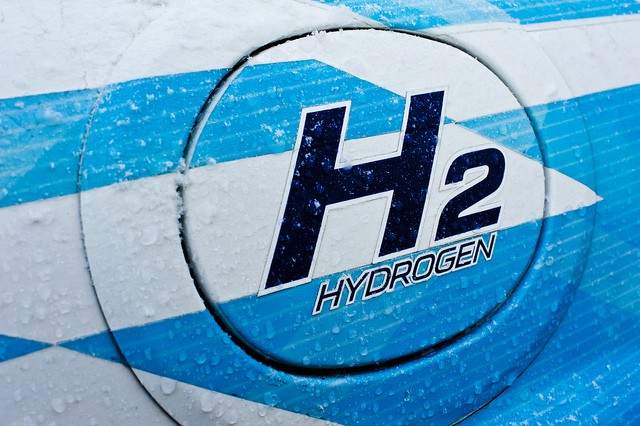Hydrogen energy is often likened to an elusive phoenix—constantly rising, yet difficult to grasp fully. As the global community seeks sustainable alternatives, the focus on hydrogen as a clean energy source escalates. It is becoming increasingly apparent that hydrogen is not merely a fleeting trend but a cornerstone for a greener future.
Hydrogen energy, at its essence, serves as a linchpin in the quest for sustainable power. With its remarkable potential to transform how we generate and consume energy, the conversation must pivot towards methods to conserve and utilize this potent resource effectively. This discourse will illuminate pathways toward a hydrogen-centric future while expounding upon the methodologies to optimize its conservation.
The Promise of Hydrogen Energy
To understand the relevance of hydrogen in the energy narrative, one must first acknowledge its fundamental characteristics. Hydrogen is the most abundant element in the universe; it presents itself as a versatile energy carrier. Through processes such as electrolysis, hydrogen can be derived from water, allowing for a renewable source that emits only water vapor when utilized in fuel cells. This characteristic is akin to a natural cycle, harmonizing with Earth’s own ecological systems.
Yet, the potential of hydrogen reaches beyond mere abundance; it is a gateway to diminishing our carbon footprint. By utilizing hydrogen technology, industries can make significant strides towards decarbonization. It acts as a transformative force, shifting traditional fossil fuel dependency towards a paradigm that embraces renewable resources.
Conservation Techniques for Hydrogen Energy
Conserving hydrogen energy necessitates a multifaceted approach, spanning efficiency improvements, infrastructure development, and technological innovation. Each step taken towards better conservation is akin to assembling intricate pieces of a puzzle, each playing a pivotal role in the greater picture of sustainability.
1. Enhancing Efficiency in Production
The conservation of hydrogen begins with its production. Current methods such as steam methane reforming emit significant greenhouse gases, thus hindering hydrogen’s clean energy potential. Innovative techniques should be prioritized to enhance the efficiency of green hydrogen production. By harnessing renewable energy sources like wind and solar, electrolysis can produce hydrogen in a sustainable manner. Energy efficiency measures can also help in optimizing the energy inputs needed for hydrogen production, thereby reducing waste.
2. Developing Infrastructure
The infrastructure surrounding hydrogen distribution and storage is critical to its conservation. Transporting hydrogen requires specialized pipelines and storage solutions to prevent energy loss. Investing in advanced technologies such as solid-state hydrogen storage or liquid organic hydrogen carriers can lead to more efficient transport methods. Establishing a robust network of refueling stations is imperative for facilitating this transition, much like laying the foundation for a bridge connecting two vital infinities.
3. Technological Innovations
Innovation is the lifeblood of hydrogen conservation. Fuel cell technology has advanced dramatically, leading to more efficient applications in automotives and heavy industries. Embracing research in catalytic materials can enhance fuel cell efficiency, reducing production costs while improving storage. Furthermore, developing smart management systems to optimize energy release from hydrogen reserves can lead to invaluable conservation efforts. These technologies serve as the compass guiding the journey towards a hydrogen energy-dominant future.
4. Education and Public Awareness
While technological advancements are crucial, public understanding and acceptance are equally important in hydrogen conservation efforts. Educational campaigns that demystify hydrogen energy and its benefits can galvanize support for its adoption. Just as a tree requires both roots and sunshine to flourish, hydrogen’s full potential hinges on informed consumers and advocates who will champion its cause.
The Role of Policy in Conservation
Policy frameworks play an instrumental role in shaping the hydrogen landscape. Governments must formulate regulations that promote hydrogen technology development while ensuring safety standards are met. Incentives for research, subsidies for infrastructure, and policies that promote public-private partnerships can create an ecosystem conducive to hydrogen innovation. This collaborative effort leads to a sustainable energy narrative that transcends individual capabilities.
A Vision of the Future
Envisioning a world where hydrogen energy reigns supreme paints an electrifying picture. Renewable hydrogen could power everything from personal vehicles to industrial processes, significantly minimizing our dependence on fossil fuels. With the tides of climate change rising, becoming the harbinger of hydrogen as a mainstream energy source is paramount. Only through concerted conservation measures can the potential of hydrogen be realized, propelling humanity toward a cleaner, greener future.
Conclusion
Hydrogen energy stands as a beacon of hope in the fight against climate change, reminiscent of a lighthouse guiding weary travelers through tumultuous seas. Conserving this vital resource is not merely an option; it is a moral imperative. By enhancing efficiency, developing infrastructure, fostering innovation, and instigating education, society can fully harness hydrogen’s unique appeal. The journey ahead may be fraught with challenges, but the destination is one of promise—an era where clean power, anchored by hydrogen, permeates every facet of life.








